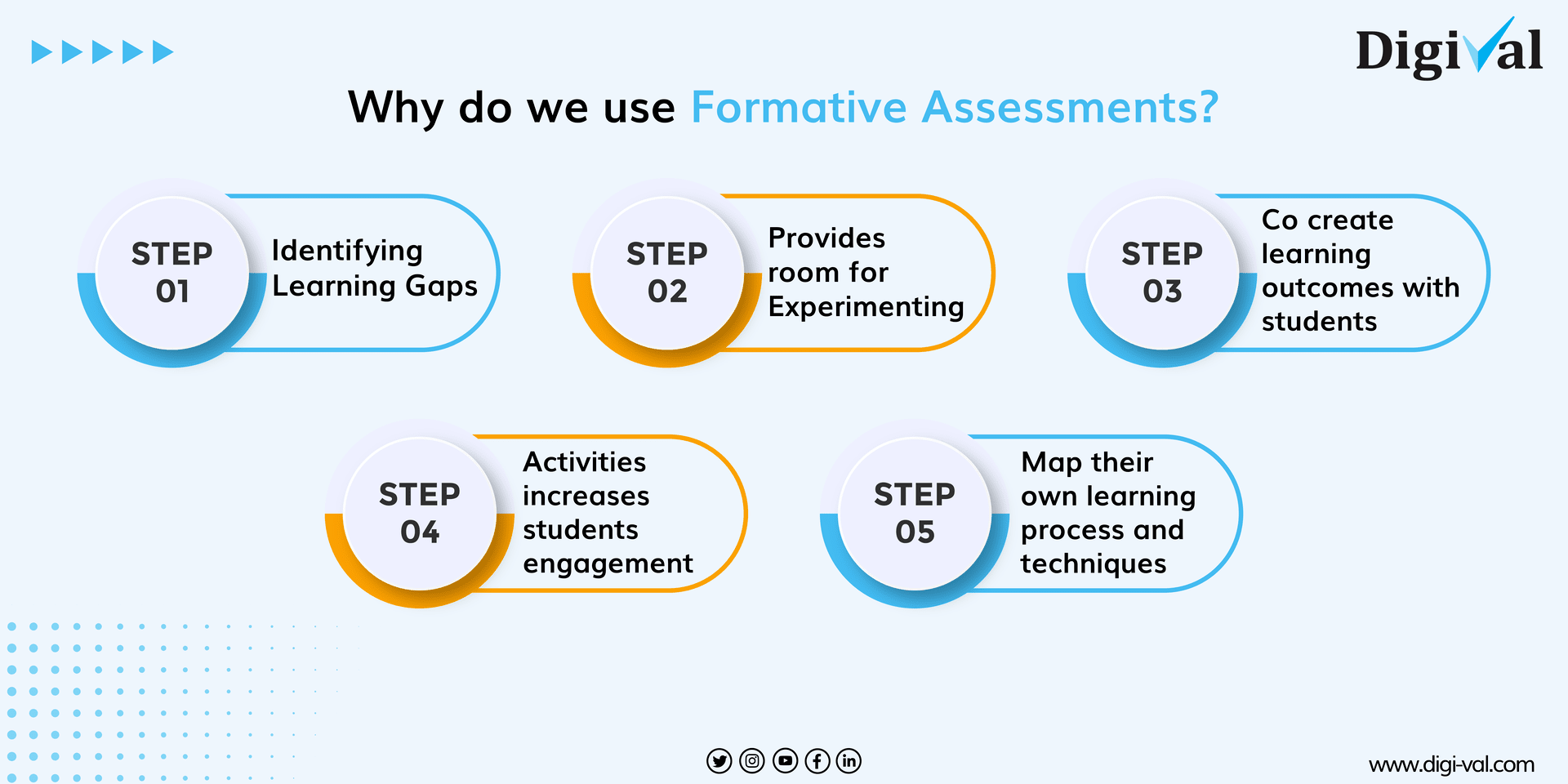Taking up a test or appearing for an exam is considered a day of evaluation and tension for students. But the real challenge lies in understanding that these assessments are more than just tests. Formative assessments include a bunch of activities and strategies that the teachers formulate to understand the learning pattern and effectiveness of the learning process.
The Data from the formative has two major benefits:
1. Helps to improve the learning and teaching process
2. Enables the students to have deeper insights into what they know and do not know. These benefits make the institutions move towards a data-driven model of personalized learning.
Formative assessments are categorized into two:
- Generic use of Formative assessment- Assessment for Learning is used for improving the learning process
- Summative use of Formative assessments- Assessment for learning used for following the progression of students
Formative activities are frequent and can be conducted after each session to evaluate student understanding of that particular session. While summative use of formative exams are conducted after a specified period of academic activities or continuous activities in a structured and regulated method as continuously, periodically, the multi or single staged manner in a course
The tasks usually rely on case scenario-based multiple choice questions and written, and practical assessments used to help students evaluate their academic abilities to gain more cognitive, communication, interpersonal skills, research, and scholarly capabilities. Most importantly to evaluate the effectiveness using the acquired theoretical knowledge.
So what are the activities that teachers can employ for formative assessment?
- Recalling session at the beginning of a class
- Feedback notes for evaluating student understanding for each session
- Quizzes for each topic that is covered in a week or a day
- Discussion-based activities like group discussions, forums, debates, peer teaching, etc.
- Partner activities like letter writing, sketching, etc.
Formative assessments are alternative methods to understand what and How much the students have learned from their sessions. The most efficient tool that teachers adopt is incorporating various art forms into learning. Nowadays, classes go beyond mere textual reading. The simple way to understand this is the shift in assignment techniques throughout the years. Teachers now have upgraded the tasks to the application level, where students are expected to present their knowledge through visual, photographic, or auditory aids.
A research study conducted in 2019 in the US indicates that 99% of institutions have employed video learning in their curriculum which would in turn bring more success to the organization.
For instance, learning a play by Shakespeare becomes easy and comprehensible when it is enacted by the class. Students have a more retention capacity for visuals than texts. So they might store a dialogue or scene better after a play rather than by reading it.
Same way, role modelling, storytelling, and drama play can be used in health sciences programs to bring a complex understanding of competencies to achieve the best in patient management.
Another checkpoint in student evaluation is what they already know.
Teachers must be aware of where the students stand in each subject. How well each concept has been registered and understand where the gaps in learning are. This can be made easy through guides like Bloom’s Taxonomy. Teachers can evaluate the position of each student on the pyramid. Students can be guided to move from the lower level of remembering and understanding to the higher levels of application, evaluation and creation of new knowledge.
The purpose of learning is to apply and use the knowledge that has been learnt or read in text. Basically to understand means to know what to do and assessment is all about measuring the knowledge of the application.
Unless the knowledge finds its application, the concepts remain static in the mind of the individual. Thus, teachers can employ insightful strategies in upbringing the students to higher performance rates.
assessmentsformative assessmentsummative assessmenteducational softwareacademic managementstudent learningdigital assessmenteducationstudent engagementdigiclassdigiassessteacher supporte-learningacademic management solution



